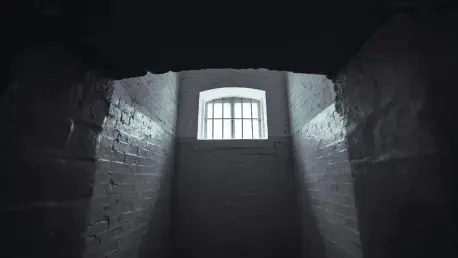In a landscape where the criminal justice system constantly evolves, the expertise of practitioners like Marco Gaietti proves invaluable. Renowned for his thorough grasp of complex legislative reforms, Marco offers perceptive views on the challenges and opportunities facing organizations, including the Bureau of Prisons, as they navigate new laws intended to reshape incarceration practices.
Can you explain the main goals of the First Step Act and how it was intended to impact federal incarceration?
The First Step Act primarily aimed to reduce recidivism and improve rehabilitation opportunities for inmates. It was designed to tackle long-standing issues within the federal criminal justice system by encouraging participation in rehabilitation programs and allowing inmates to earn time credits for early transfer to community-based custody. By focusing on these areas, the Act intended to make the system more equitable and fiscally responsible, ultimately reducing incarceration costs and time spent in prison toward the end of a sentence.
How does the First Step Act attempt to reduce recidivism and improve rehabilitation opportunities for inmates?
The Act incentivizes inmates to engage in evidence-based recidivism reduction programs and productive activities. By participating, inmates earn credits that can be applied to shorten their custody through transition into community-based settings like halfway houses or home confinement. This framework aims to prepare inmates for reentry, thereby reducing the likelihood of re-offense and fostering a smoother integration back into society.
What mechanisms does the First Step Act provide to encourage early transfer of inmates to community-based custody?
The First Step Act allows inmates to earn time credits through program participation that can be applied toward prerelease custody. The premise is that inmates engaged in rehabilitative efforts will be incentivized with credits that reduce their institutional terms, offering them a more seamless transition into community custody settings as they approach the end of their sentences.
What were the objectives of the Second Chance Act, and how did it aim to affect incarceration rates and costs?
The Second Chance Act, enacted in 2008, focused on reducing incarceration rates and costs by expanding opportunities for community-based reentry. It offered eligible inmates placement in Residential Reentry Centers for up to one year, which fostered gradual reintegration and potentially decreased the financial burden of extended incarceration within high-security institutions.
How did the Bureau of Prisons historically implement the Second Chance Act, and who benefited from it?
Historically, the Bureau of Prisons embraced the Second Chance Act by facilitating placements in Residential Reentry Centers, benefitting inmates across varying security levels. By offering extended time in community-based placements, both minimum-security camp inmates and those from high-security facilities experienced the initial transition stages back into society, aiding successful reentry.
What challenges did the Bureau of Prisons face when trying to integrate the First Step Act with the Second Chance Act?
One significant challenge was the increased demand for Residential Reentry Centers under the First Step Act, which strained existing capacities and created confusion about inmate transfers. Integrating both acts posed difficulties in balancing resource allocation and ensuring inmates benefited from community placements consistently, which was often a point of miscommunication or uncertainty.
Why has there been confusion among inmates regarding the timing of their transfer to community-based custody?
Confusion largely arises from the discretionary decision-making of the Bureau of Prisons. The lack of transparency and explanation in these decisions leaves inmates uncertain about how and when their earned credits will translate into community-based transfers, compounded by inconsistencies in implementation between First Step Act and Second Chance Act provisions.
What role does the BOP’s discretion play in the implementation of the First Step Act and Second Chance Act?
The Bureau of Prisons retains broad discretion in deciding inmate placements in community custody. This discretion allows them to exercise control over who benefits from early community transitions and under what circumstances, often leading to extended incarceration when transparency and consistency are absent in their decision-making processes.
Why is there often a lack of transparency and explanation in the BOP’s decision-making regarding community placement?
This lack often stems from the internal nature of the decision-making process, which is labeled as “discretionary” and typically proceeds without formal justification. Consequently, inmates remain unaware of the rationale behind decisions affecting their release, exacerbating feelings of uncertainty and impacting their rehabilitation plans.
How has the Bureau of Prisons used its discretion to extend incarceration rather than promote early release?
Factors like budget constraints, limited space in Residential Reentry Centers, and a conservative approach to release planning can contribute to the BOP using its discretion to favor keeping inmates longer in prison. The lack of a standardized program statement for immediate community placement further complicates efforts that could promote early release.
What role do Residential Reentry Centers (RRCs) play in the transition of inmates to community-based custody, and what challenges do they face?
Residential Reentry Centers serve as critical transitional spaces, offering structures for inmates as they reintegrate into society. However, the challenges they face include limited capacity and resources, which often hampers the ability to accommodate all eligible inmates requiring community placements, affecting timely and effective transitions.
Why might the BOP be hesitant to maximize the use of RRCs for community placement?
Reluctance may come from existing resource limitations, concerns about maintaining oversight, and workload implications stemming from staffing shortages. With the pressure to maintain security and effectiveness, the BOP might hesitate to fully utilize RRCs without additional support and expansion of their capabilities.
How do the security classifications within the BOP impact inmate placement in community custody?
Security classifications dictate the degree of oversight required for inmates during community placement. Those in minimum or low-security settings are more likely eligible for early transfer, yet this opportunity won’t reduce the fundamental oversight that still constitutes a form of incarceration, complicating perceptions of liberty compared to confinement.
How does being placed in an RRC or on home confinement still constitute a form of incarceration?
Community placements, be they in Residential Reentry Centers or home confinement, involve stringent regulations and oversight akin to incarceration. Inmates face movement tracking, curfews, and check-ins, manifesting the punitive aspects of the criminal justice process even outside traditional prison walls.
What are some possible reasons the Bureau of Prisons has not fully utilized the First Step Act?
A lack of leadership to modernize incarceration practices and reliance on discretion without consistent regulatory frameworks lead to underutilization. Staffing shortages might also affect implementation pace, alongside possible tensions between job security for prison staff, despite legislative tools encouraging community placements.
How does the staffing situation at the BOP affect its ability to implement these legislative reforms?
Staffing shortages challenge the BOP’s capacity to effectively manage transitions from prison to community placements. Limited personnel available to oversee these processes can slow down reform efforts despite the clear legislative pathway encouraging advancement into community reintegration practices.
Why is the BOP’s leadership crucial in seizing the opportunity to modernize incarceration practices?
Bold, forward-looking leadership can drive the adoption and integration of reforms like the First Step Act, utilizing available legislative resources to modernize the approach toward incarceration. New policies require strong management to navigate complex frameworks and ensure consistent application across varied institutional scenarios.
Can you discuss how the physical state of prison facilities might impact the BOP’s policies on community placement?
Deteriorating prison infrastructures hamper efforts to transition inmates optimally. Inadequate facilities complicate daily operations, shifting focus to managing existing challenges rather than planning long-term placement strategies. Refurbishing these settings could offer a safer environment for both staff and inmates, facilitating smoother transitions.
What solutions exist for the Bureau of Prisons to address these challenges and improve its operations?
Implementing transparency through formal explanations and consistent education programs can mitigate confusion over placements, while prioritizing resource allocation to expand Residential Reentry Centers would maximize opportunities for inmate reintegration. Leadership committed to modernizing incarceration practices must spearhead these initiatives to foster successful outcomes.









